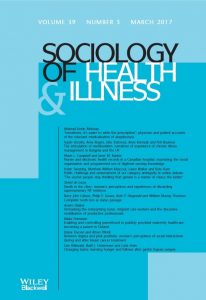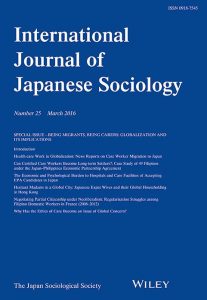Fiction in the Sociology Classroom?
This summer, I tried something new with my sociology of gender class. Rather than assigning a traditional textbook or a reader, I had the class read a work of fiction based on social science research (along with a few topical nonfiction works). I was nervous to see if my students, who are used to big lecture halls and multiple choice tests, would feel comfortable discussing the novel and would come away from the class with a better understanding of the social scientific themes embedded throughout the text. But my fears quickly went away. In fact, the discussions the work of fiction inspired were some of the best of the semester.
My sociology of gender class read Low Fat Love, a social science fiction novel by Dr. Patricia Leavy. This novel is based on the author’s many years of research about pop culture, women’s identities, self-esteem, and body issues. Leavy introduces the reader to two female protagonists, Prilly and Janice, who work together at a publishing house in New York City. Both Prilly and Janice struggle with their jobs, their relationships, and their senses of self. Prilly is a bright young woman with a promising job. Despite her many accomplishments, Prilly’s self-esteem is easily derailed by (and maybe even at times, dependent on) her relationship with Pete, a guy who actively avoids commitment. Janice also has unfulfilling relationships, particularly with her husband, her son, and her extended family. To compensate, she throws herself completely into her work and even tries to sabotage other women by setting unrealistic expectations for them to achieve. To the outside world, Janice may seem hardworking and driven, but inside, Janice is quite sad and lonely.
These two characters, Prilly and Janice, represent two different models of femininity, both of which were relatable to my students. Prilly’s identity is wrapped up in her relationship with men; her sense of self depends on how Pete perceives and treats her. All of my students knew at least one person like Prilly. And, having just read Guyland by Michael Kimmel, they knew about men like Pete, young white men in their twenties who seek relationships without commitment. These arrangements often leave women, and sometimes men, unsatisfied. Prilly’s character allowed my students to talk about these types of relationship issues and problems that are relevant to their lives. My students hoped for more for Prilly: They wanted her to find a better model of self-esteem either by finding a better guy or by working on her relationship with herself (I sided with the latter suggestion).
Janice, on the other hand, gives off the appearance of excessive self-esteem. She puts up a hard outside shell to prove to the world that she is strong and can handle the cut-throat world of work. Yet, she doesn’t have fulfilling relationships with anyone, men or women. The solitude of Janice’s character provoked my class to talk about the importance of positive relationships both in an out of the workplace. My students linked Janice’s behavior to workplace issues for women. Janice sometimes sabotages other women because she wants to succeed in her career. Though this is ultimately counterproductive for women in the workplace, Janice feels threatened and responds in the only way she knows how. My students also hoped for more for Janice: they wanted her to reconcile her relationships with her family and to have more positive relationships with the women with whom she works.
Assigning a novel based on social science research was new to me, but it was well worth it. The discussion about the novel was one of my best class discussions to date. The students related to the characters and used the different scenarios in the text to make relevant sociological points about gender. Moreover, the students felt comfortable talking about the novel. While sometimes they were unconfident in their abilities to understand the other nonfiction, traditional sociological books, they knew they understood the material from Low Fat Love and they wanted to talk about it. I will use Low Fat Love again in my classroom and I urge others to consider it, too. I’ve thought about other books to use in the classroom (like the Hunger Games series to talk about inequality and core/periphery relations), but does anyone else have positive experiences with fiction in the classroom?
Gordy, Laurie L. and Alexandria Peary. 2005. “Bringing Creativity into the Classroom: Using Sociology to Write First-Person Fiction.” Teaching Sociology 33(4): 396-402.
Irvine, Colin C. 2007. Teaching the Novel Across the Curriculum: A Handbook for Educators. Westport, CT: Greenwood Press.




1756-2589/asset/NCFR_RGB_small_file.jpg?v=1&s=0570a4c814cd63cfaec3c1e57a93f3eed5886c15)

Hello! My colleagues and I wrote about using fiction and non-fiction in Sociology courses. Published in Teaching Sociology (cite below). Love your description of a Social Science novel! mci
Castellano, Ursula, Joseph DeAngelis, & Marisol Clark- Ibáñez. “Cultivating the Sociological Perspective Using Nontraditional Texts,” Teaching Sociology, 26 (3) July
Thank you for sharing the link to your research! It provides much needed support for the place in literature in helping to shape our thinking about life and living.
Thank you for sharing your work with students on the impact of how reading novels helped students to understand sociological concepts!
As a sociology student looking into PhD programs and wanting to get a head start on some important works in sex and gender, I’ve been wary to go out of way to read such social science fiction novels. Do you recommend this more for intro classes to open up dialogue and then introduce traditional nonfiction works? I ask because I’m considering teaching at the university level. Also, what were the nonfiction books that you assigned alongside Low Fat Love?
Thanks!
I took a feminist science fiction class and it was one of the best classes. We spend so much being deconstructive in the classroom…fiction, especially speculative fiction, let’s us think about how to recreate things, and evaluate challenges to the status quo in a different way.